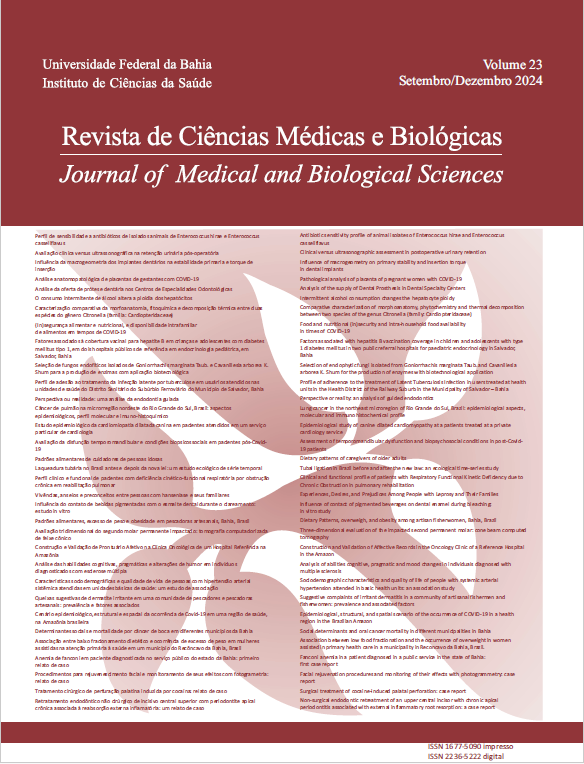Influence of macrogeometry on primary stability and insertion torque in dental implants.
Primary stability and insertion torque in dental implants.
DOI:
https://doi.org/10.9771/cmbio.v23i3.57207Keywords:
Dental implant, Primary stability, Insertion torque., Protheses and implantAbstract
Introduction: The primary stability and insertion torque of osseintegrated implants is fundamental to the success of osseointegration, especially in cases where a prosthesis with immediate load is installed. Objetive: This study aimed to assess the influence of the macrogeometry of two implant types on insertion torque and primary stability. Materials and Methods: This study utilized 40 implants, comprising 20 conical and 20 cylindrical, divided into four experimental groups. These implants were installed by a single operator, in a synthetic bone block following the manufacturer's recommendations and the sub-instrumentation technique. Implant stability was immediately assessed post-installation using magnetic resonance frequency analysis, measured by Osstellâ. The insertion torque was determined using a surgical implant installation motor. The resulting data were subjected to statistical analysis using the Kruskal–Wallis test, with Dunn's post hoc test employed to determine any significant differences between the implant groups in terms of insertion torque and primary stability. Results: A significant difference was observed in the stability of buccolingual (p=0.002) and the average stability (p=0.008), with respective effect sizes of 0.197 and 0.335. The insertion torque also demonstrated significance (p=0.018). Notably, a decrease in the values of the 04×10 implants was observed when compared to the 3.5×10 implants. Conclusions: Implants with a smaller diameter exhibited greater primary stability, whereas those with a larger diameter demonstrated higher insertion torque values.
Keywords: Dental implant; primary stability; insertion torque.
Downloads
Downloads
Published
How to Cite
Issue
Section
License
Copyright (c) 2024 Journal of Medical and Biological Sciences

This work is licensed under a Creative Commons Attribution 4.0 International License.
The Journal of Medical and Biological Sciences reserves all copyrights of published works, including translations, allowing, however, their subsequent reproduction as transcription, with proper citation of source, through the Creative Commons license. The periodical has free and free access.


